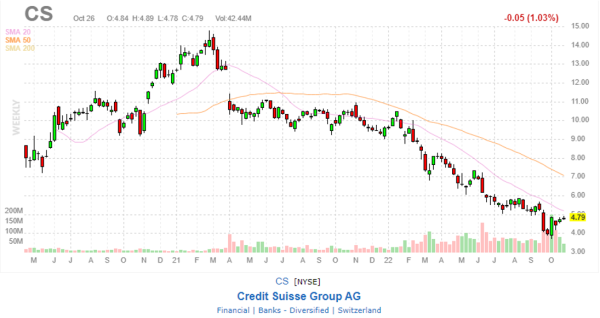If you would like to receive weekly updates like this, sign up here.
Whenever you invest even a single dollar of your capital into an investment, you need to balance the risk taken on compared to the potential reward.
To determine the balance between the two you must do research.
Or at the very least employ the best financial advice possible prior to investing.
But have you asked yourself the question: is that enough?
Are there risks associated with a particular investment that are completely unknown to you?
And what if I told you those same risks are also completely unknown to the financial professionals you may rely upon also.
And that this ignorance covers some of the biggest and most well-known asset classes that you probably invest in.
I will pull no punches here. Recent events in the UK have given me my first clue as to what the end of the current 18.6-year Real Estate Cycle may look like.
Rest assured this seminal moment will quickly fade from view for the majority as we get on with our busy lives.
However, if you are someone who doesn’t like surprises, and plans to mitigate risks, then something that will quickly become a side-show must be front and centre on your agenda.
Right now, while you still have time to be ready.
Read on now as I show you the worth of a little knowledge and how to use the timing that only the real estate cycle can give you to save your financial future from ruin.
The slow burn fuse has been lit
What we witnessed over the last month or so in the UK is a legitimate and very real warning shot across the global financial system.
While everyone has been distracted by the circus that is UK politics currently, I fear a critical warning by Europe’s largest asset manager may go completely unheard.
It is as history suggests, as the second more speculative half of the real estate cycle really begins to ramp up, that any dissenting voices will be ignored as normal folk fall over themselves to leverage up to take advantage of a roaring stock and property market.
This blissful ignorance of what’s really happening will not be taken to heart until, sadly, it is too late.
Here’s what I mean.
Europe’s largest asset manager has warned that the tremors in the UK pensions market should be a “wake-up call” to investors and regulators about the dangers of hidden leverage in the financial system.
Here is a quote from a recent Financial Times interview:
“Vincent Mortier, chief investment officer at Amundi, which has €1.9tn in assets, said in an interview that the recent turmoil unleashed by the UK government’s “mini” Budget was “a reminder that shadow banking is a reality. I don’t believe that anyone before the crisis had any idea of the magnitude of this shadow banking in the pension fund industry.”
If you blinked you missed it, but former UK chancellor Kwasi Kwarteng shocked markets globally with £45bn of unfunded tax cuts on September 23, driving up UK government bond yields and wreaking havoc on the country’s £1.4tn defined benefit pensions industry.
One thing I’ve learnt from over 20 years of experience: markets don’t like surprises.
Which leads us nicely to our first clue. When the current real estate cycle ends and turns nasty, eventually the culprit will be something that no-one was either looking at nor necessarily prepared for.
Vincent Mortier mentioned in the above quote the links between the UK shadow banking system and pension funds. And it’s here that we come across a term which, maybe, might become as famous as ‘mortgage-backed securities’ did in the aftermath of the 2007 GFC.
‘Liability driven investment’ instruments are a specialised hedging strategy to help schemes like the UK pension funds to better match their assets and liabilities.
Pension funds use them to leverage themselves to gilts (or bonds) without the need to physically own them.
These gilts have historically been regarded as quite safe instruments to hedge since the UK government is hardly about to go broke. Plus, the lack of volatility in yields allows them to be effective in ensuring the debts these funds had to borrow in a zero-interest world can meet their obligations.
That is, until the former newly elected UK Tory government, with no prior warning nor liaison with the UK banking and financial sector, decided to drop their growth-at-all-costs bombshell.
The fact the mooted tax cuts were completely unfunded meant the money had to come from somewhere (translation – via the taxpayer buying untold billions of gilts). This instantly forced the UK gilt market to reprice itself violently overnight.
Yields went through the roof; gilt prices fell through the floor. This shock of course reverberated throughout the global financial system.
Even the IMF rang up to ask what on earth they were thinking.
The drop in gilt prices led to a rush of margin calls as counterparties demanded more cash as collateral to keep the hedging arrangement in place.
Funds were forced to sell assets (including gilts) to meet the calls, depressing prices further in a vicious circle that eventually led to an intervention from the Bank of England. £65 billion worth of intervention.
It’s hard to know for sure, but in the aftermath of all this it does appear that for every pound in underlying assets there was approx imately £3 of debt leveraged against it.
“The amounts at stake were huge and it’s a further reminder of the depth of leverage in the system, which is in multiple places that are difficult to track,” said Mortier.
Increased capital requirements imposed on banks to make them safer following the financial crisis have moved risk off their balance sheets to less heavily regulated parts of the financial system.
So, funds have left traditional banks and into asset managers, insurance companies and pension funds. Investors have fuelled the shift by pouring money into alternative strategies such as private credit as they searched for yield in a low interest rate environment.
Fine, you may think: It is their obligation to provide a return on their clients’ money.
But the issue comes in terms of transparency.
“It’s much more difficult than in 2007, when leverage was predominantly in the banks,” said Vincent Mortier. “The issue is that we don’t know exactly where it is. When you can’t measure something it’s difficult to act upon it.”
What you don’t know can kill you.
Surely by now you are starting to sense the set up that’s being alluded to here.
I think the best way to show you what that is will be with a recent example.
In late March 2021, Archegos Capital Management LP, the family office of Bill Hwang, a former New York-based hedge fund manager, defaulted on margin loans used to acquire total return swaps, a form of derivative contract.
Bill Hwang borrowed billions of dollars from blue-chip banks to amass huge positions in US-listed companies. By using derivatives, where the bank it traded with bought or sold stocks on Archegos’s behalf, the firm left no visible footprint of its activity to the investing public.
Archegos’s collapse caused billions of dollars of losses for investment banks including Credit Suisse, UBS, Nomura, and Morgan Stanley after it defaulted on margin calls, with more than $100bn wiped from the valuations of nearly a dozen companies as Archegos’s positions were unwound.
What caused this unwind was the US Fed undertaking a multi-year interest rate rise. This triggered all the margin calls which required assets to be sold cheaply to make said margin calls.
However, the best way to visualise the destruction of wealth this caused is always best shown via a stock chart.
 Source: Finviz
Source: Finviz
Above is the chart for Credit Suisse, one of the banks exposed to the fall of Archego Capital Management.
The falls began right in the middle of March 2021.
Note the large gap down. It’s clear that the market was caught off guard by the announcement that the SEC had charged Archego with margin defaults. Stock investors have not caught a break ever since.
And that’s the issue. This type of extreme leveraged positions in assets that require no public disclosure garners no attention or inquest whatsoever when the price is moving up.
But as the chart points out: what hope do average investors like yourself have when the true systemic issues behind your assets aren’t transparent, understood and factored into your own investment plan?
Is this something you need to be concerned with today? I can’t say for certain, but you most certainly will in a few years’ time.
When the time comes for the 18.6-year Real Estate Cycle to both peak and then bust, it will be incredibly important to know where you need to look to determine just how risky a position you are in.
And you won’t be told either. It’s clear the financial regulators truly don’t know the scale of what funds have transferred to these insurance companies, trust funds and shadow banks.
And for most of us, we are either directly or indirectly exposed to almost all of these.
“The issue is that we don’t know exactly where it is. When you can’t measure something it’s difficult to act upon it.”
It’s not fair necessarily but the fact is the onus is on you to apply due diligence on exactly what it is you’ve invested your precious capital into and just how much time you have to see the signs and limit the damage.
You must avail yourself of a tool which can assist you with identifying these risks on the margin when they arise and factor in when the time has truly arrived to act.
That’s where the Boom Bust Bulletin can help you.
It will teach you the history of the 18.6-year Real Estate Cycle, why it has continued to repeat to this very day and the unique opportunities that presents as the cycle turns.
By the time you read this, Rishi Sunak will have been confirmed as the UK’s NEW Prime Minister.
The market welcomed the news and rates on gilts fell helped by Chancellor Jeremy Hunt’s decision to completely unwind the former governments tax cuts.
Which means investors’ thoughts are no longer aimed at the viability of the UK’s financial institutions credibility.
And that’s how the trap is set.
And history then ends up repeating.
Make sure you are aware of that history and prepared to both benefit and protect your investments.
Best wishes,

Darren J Wilson
and your Property Sharemarket Economics Team
P.S. – If you would like to receive weekly updates like this, sign up here.
P.P.S – Find us on Twitter here and go to our Facebook page here.
This content is not personal or general advice. If you are in doubt as to how to apply or even should be applying the content in this document to your own personal situation, we recommend you seek professional financial advice. Feel free to forward this email to any other person whom you think should read it.



